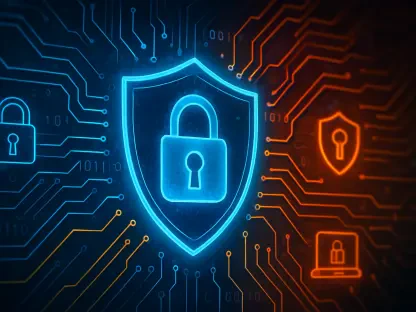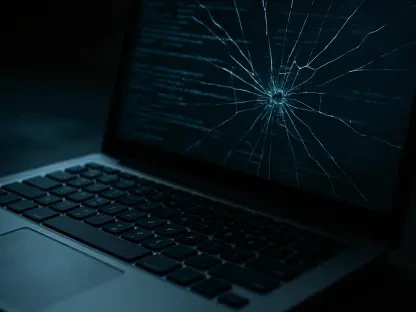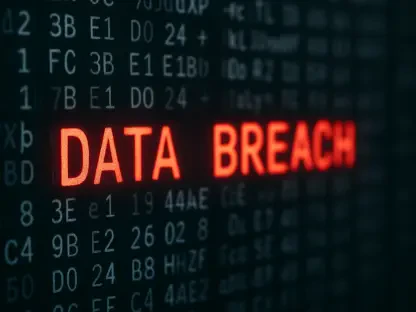The rise of sophisticated cyber-attack mechanisms is a perpetual concern in our increasingly digital world. Among the newest threats is an innovative technique developed by hackers, allegedly based in Pakistan, that capitalizes on the innocuous nature of emojis. This article delves into how these symbols, once a playful shorthand for emotion and intent in virtual communication, are being repurposed as tools of subversion and control within compromised systems.
The Emergence of Emoji-Based Command and Control
Hackers’ Creative Exploitation
In a cyber landscape littered with complex threats, the use of emojis as a means of command and control represents an uncanny shift in how attackers hide their tracks. For long, emojis have adorned our messages, adding a touch of personality and clarity, but now, in a startling turn of events, they encode nefarious intentions. These digital ideograms have transcended their usual purpose, morphing into command modules for malware. Imagine the ‘Man Running’ emoji no longer signaling haste or exercise in a text message but instead instructing a compromised device to execute malicious code. It’s a reality that’s forced cybersecurity professionals to take note and scrutinize the potential risks of what was once an innocuous aspect of our digital lexicon.The inherent simplicity of using emojis allows attackers to issue commands that are both succinct and difficult to detect, meaning that their malware can control a hacked system right under the nose of traditional defenses. By co-opting widely accepted symbols, they’re banking on our desensitization to these images, exploiting them to camouflage their activities. Tracking these transactions becomes a game of digital hide-and-seek, with security experts now scrambling to parse innocuous communication for hidden threats.
Discord as a Conduit for Cybercrime
The popular messaging platform Discord has unwittingly become a medium for these emoji-driven cybercrimes. Favored by gamers for its interactive communities and feature-rich environment, Discord provides all the tools necessary for attackers to orchestrate their plans. The platform’s servers can be morphed into a hub for issuing commands via custom emojis, where each alteration or addition of an emoji by the hacker can prompt a different action from their malware.While Discord has always been diligent in disrupting malicious activities within its network, the cunning use of emojis presents a new layer of obfuscation, making it arduous for the service to distinguish legitimate user interaction from covert cyber-attack commands. And even when Discord steps in to ban a malevolent server, the sophisticated malware, like a weed, regrows its connections through external control points, showcasing a level of perseverance and adaptability that poses a real headache for cybersecurity operations.
Unpacking the Emoji Command Code
Deciphering the Emoji Commands
Zooming into the digital battleground, the emojis reveal their double life as discrete triggers for malignant operations. The utility of this approach for cybercriminals lies in the speed and stealth with which they can direct the malware. An array of emojis, each innocuous in appearance, stands ready to deploy a variety of tasks— a ‘Camera with Flash’ emoji might capture and upload a screenshot, while a ‘Man Running’ could represent the execution of a specific process.Understanding these emoji commands is vital for unraveling the functionality and potential destructiveness of the malware in question. They serve as a cryptic lexicon that streamlines the attacker’s communication with the infected system, offering a cloak of normalcy where one would least expect a breach. This shadow semantics highlights the sophistication of the methods employed by the hackers and challenges defenders to conceive new ways of intercepting such covert dialogues.
The Evasion and Persistence of Malware
The craftiness of cyber-attackers is nowhere more evident than in the resilience of their tools. The malware associated with the emoji-based commands, dubbed ‘Digomoji’, is particularly tenacious. It carves out a foothold within a system and, like an unshakeable parasite, maintains its grip even after the host’s defensive systems rally to dispel it. This malware’s endurance is owed to its design, allowing it to reconnect with its masters and continue its machinations despite attempts to sever its link.Uncovering strategies like these underline how rudimentary our understanding of cyber threats has become in the face of their evolution. The adaptability of ‘Digomoji’ to weather countermeasures—and the vast capabilities it possesses, from scanning networks to filching data via file sharing services—speaks volumes about where cybersecurity measures need to head. It’s a cat-and-mouse game that’s become less about trapping the rodent and more about outsmarting an increasingly wily and resourceful adversary.
Cybersecurity in the Age of Emojis
Revising Defense Mechanisms
The novelty of using emojis as a vehicle for cyber-attacks casts a shadow on conventional cybersecurity strategies. The digital landscape has been forced to reconsider what constitutes a threat and how to combat one that laughs in the face of current defenses. To stand a chance against emoji-based command protocols, there’s a pressing need for continuous updates to antivirus software, deeper cybersecurity literacy, and razor-sharp vigilance in online behavior.The onus is on both individuals and corporations to arm themselves against such insidious threats by enforcing stringent security practices. Antivirus programs must go beyond surface scans, diving into the pool of Big Data for subtler anomalies. Meanwhile, the once casual click on an emoji must now be approached with caution, with users educated to understand the potential risk hidden within every digital nook and cranny.
Future Trends and Preemptive Measures
As we navigate an increasingly digital society, the evolution of cyber-attack techniques poses a constant threat. Recently, hackers, purportedly from Pakistan, have developed a crafty new method that turns emojis—those small, digital symbols of emotion—into instruments of system manipulation and dominance. These once benign characters, integral to expressing sentiments in online conversations, are now being manipulated for nefarious purposes. This disturbing trend underscores a new level of ingenuity within cyber threats, as attackers exploit the ubiquitous and seemingly harmless nature of emojis to infiltrate and control digital systems. Our article explores this unanticipated twist in cyber warfare, illustrating how conventional elements of our internet language are now being used against us in the digital battleground. As the landscape of cyber threats continues to morph, understanding and anticipating such unconventional tactics becomes crucial for digital defense strategies.









